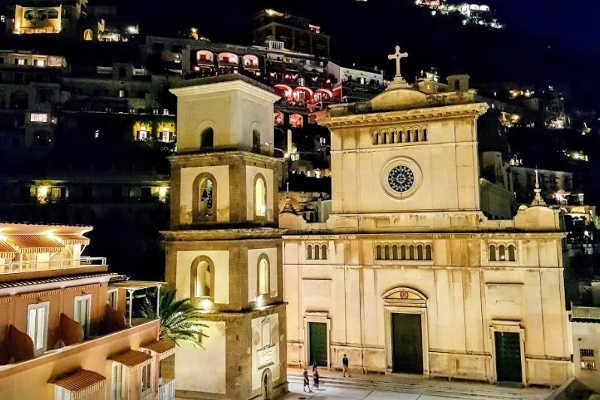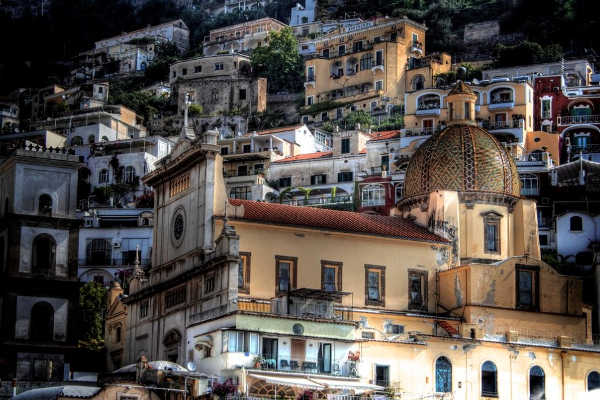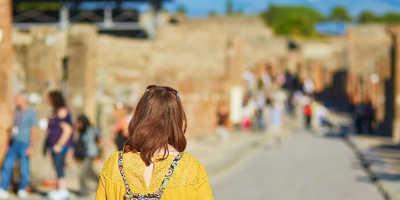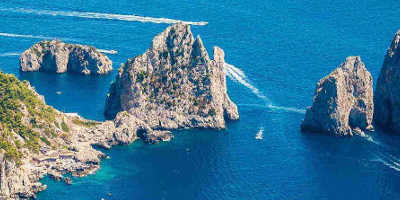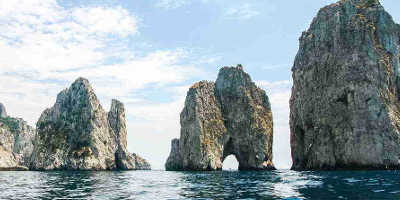Church of Santa Maria Assunta, Positano
The Church of Santa Maria Assunta perches on a cliff against a stunning backdrop of ocean – it’s the picture-perfect spot.
But aside from being a pretty addition to the Amalfi coastline, the church boasts an interesting backstory which can still be felt beneath the exquisite domed roof.
Black Madonna at the Church of Santa Maria Assunta
Legend has it that pirate ships once ruled the area, travelling through nearby waters carrying plunder like the Byzantine painting of the Black Madonna that can now be found in the Church of Santa Maria Assunta. The time period of this tale dates back to the 12th century. The legendary narrative continues with a violent storm that hit the coastline. The ship of Saracen pirates didn’t stand a chance, but in true mythical style, the painting of Mary cried out “Posa, posa” (which directly translates as “lay me down”). The captain then threw the painting overboard and the boat glided safely into the harbour.
This of course led the pirates on board to revel in wonder at the Black Madonna speaking and saving them from the devastating storm, and they quickly became Christians in light of the event. The painting was taken in by the locals and they built a church over the place where the painting washed ashore, believing it to be the Virgin Mary’s chosen resting place. The town was soon given the name Positano after the words Mary cried from the ocean.
The church where the painting is now displayed began life as the abbey of Positano’s Benedictine monastery in the 12th century. It was during this year that it became the home of the Black Madonna, but the Romanesque building soon became a victim of neglect when the town became tired of battling with plunderers and pirates.
The history of the Church of the Santa Maria Assunta
The Church of Santa Maria Assunta enjoyed a period of prosperity from its consecration up until the mid-15th-century, but after this point it began falling into disrepair. The last Benedictine abbot, Antonio Acciappaccia and his monks are said to have abandoned the church around this time due to the risks of attack and plunder by invading pirates. Many years later, Nicola Miroballi (who later became archbishop of Amalfi) took on the monastery but it still did not return to its former glory. Other abbots who took on the church were Federico Borromeo and cardinal Vincenzo Maria Orsini (who later became Pope Benedict XIII).
In 1777 the clergy of Positano decided to restore the church by first stripping all power from the abbot of the time, Liborio Manna. After this, a five-year renovation began that ended in 1783. Finally, after years of neglect, the church rose again to full glory and was consecrated by Archbishop Antonio Puoti who bestowed a golden crown upon the Virgin.
Visit the Church of Santa Maria Assunta
The church is both beautiful and simple in its external appearance with yellow walls and a beautifully tiled dome on top. The inside of the church is divided into a nave and two aisles with five arches leading to five chapels on each side. The chapels on the right include the chapel of Saint Blaise, the Immaculate, Saint Anthony, and Saint Anna with the altar of Circumcision on the far right. Within the altar of Circumcision is a painting by artist Fabrizio Santafede. On the left are the chapels of the crucifix, the annunciation, the chapel of Saint Vitus, and Saint Nicholas of Bari. At the front of the church, to the right of the high altar is the chapel of Saint Stephen where the statue of the Madonna with Child is kept. Take time to wander amongst the dividing arches and take in the beautiful church with its golden embellishments. As you approach the front you can gaze up into the dome which has windows circling its base, casting light upon the altar as though the heavens were watching over the church and its guests.
Things to see near the Church of Santa Maria Assunta
Positioned below the church is the Museo Archeologico Romano where you can take a step back into ancient Roman times. The museum is built upon the remains of an ancient, opulent villa whose remains can still be seen. The museum also displays artefacts discovered during the excavations.
The surrounding town of Positano is a joy to discover with its winding streets lined with restaurants, shops, and cafes. After a visit to the church of Santa Maria Assunta, visitors can relax with a coffee or simply wander the streets, taking in its culture. The town also has two beaches that descend into the crystal-clear waters of the Tyrannian sea.
The history of the Black Madonna forms an important part of Positano history – it is, after all, thought to be how the Amalfi town got its name – and witnessing the painting in all its glory almost brings back visuals of 12th century plunderers gliding their way to shore in awe in the midst of a raging storm.
As well as its fascinating backstory, the Black Madonna’s home – the Church of Santa Maria Assunta – is a breath-taking piece of architecture that forms an iconic silhouette against Positano’s skyline, and is definitely worth a visit if you’re passing through.

